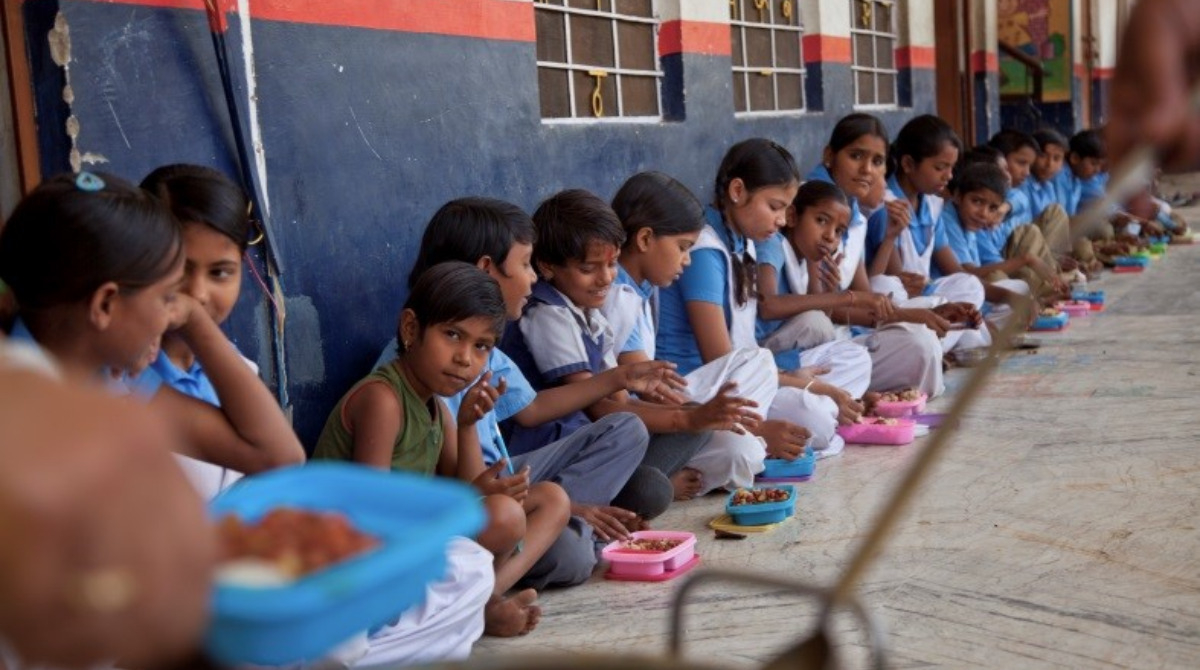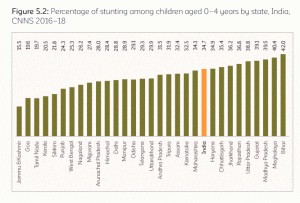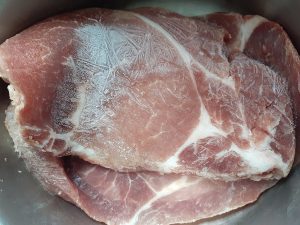Taboos around food should be addressed seriously if malnutrition in all social groups and classes has to be tackled.

Representative image. The basis for nutritional policies and educational messages should be science and not ideology or propaganda (Supplied)
India is known for the double burden of malnutrition.
The percentage of overweight adolescents aged 10–19 years by state is 5.7 percent in Telangana, 7.2 percent in Karnataka, 9.4 percent in Andhra Pradesh, 9.5 percent in Kerala, and 14.4 percent in Tamil Nadu, as can be seen in the Comprehensive National Nutrition Survey, 2016–18) (CNNS, Figure 5.8).
As early as 0–4 years, the percentage of stunting is 32.5% in Karnataka, 31.5% in Andhra Pradesh, 29.3% in Telangana, 20.5% in Kerala, and 19.7% in Tamil Nadu (CNNS, Figure 5.2). Further, the percentage of those underweight in the same age group is 35.5% in Andhra Pradesh, 32% in Karnataka, 30.8% in Telangana, 23.5% in Tamil Nadu, and 18.7% in Kerala (CNNS, Figure 5.4).
Very often, being overweight is associated with a higher socio-economic status, and such people are believed to be at more risk of non-communicable diseases such as diabetes, hypertension, heart disease, etc., while only those from lower socio-economic groups are thought to suffer from stunting (less height for age), undernutrition (less weight for age), and other nutrition-related deficiencies.
 However, it is important to understand that some of these conditions cut across social class and are dependent on a host of factors.
However, it is important to understand that some of these conditions cut across social class and are dependent on a host of factors.
A well-to-do vegetarian who consumes a diet rich in cereals, sugars, trans fats, and ultra-processed foods is at risk of developing non-communicable diseases and deficiency of a host of nutrients such as calcium, iron, zinc, folate, Vitamins A, B6, B12, and D, etc.
Alternately, someone from a lower socio-economic group who consumes mainly cereal, watery curry, and a few or no vegetables, meat, eggs, or dairy is at risk of nutritional deficiencies and also non-communicable diseases later on in life.
According to the Comprehensive National Nutrition Survey (2016–18), the percentage of children aged 6–23 months receiving a minimum acceptable diet was 32.6% in Kerala, 4.2% in Tamil Nadu, 1.3% in Andhra Pradesh, and 3.6% in Telangana and Karnataka compared to 6.4% for India.
A minimum acceptable diet is expected to include at least the minimum dietary diversity and minimum meal frequency in breastfed children aged 6–23 months. In non-breastfed children aged 6–23 months, it means children have received at least two milk feeds and had at least the minimum dietary diversity and the minimum meal frequency during the previous day.
The minimum meal frequency in breastfed children is two meals a day in 6–8 month-old children and three per day among those aged 9–23 months. Among non-breastfed children aged 6-23 months, the minimum meal frequency should be four per day.
Minimum dietary diversity for children aged 6-23 months should contain food from four or more food groups during the previous day. The food groups are grains, roots, and tubers; dairy products (milk, yogurt, cheese); eggs; legumes and nuts; other fruits and vegetables; flesh foods (fish, poultry, meat, liver/organ meat); foods rich in Vitamin A.
Nutrition status can be adversely affected if people do not have access to even minimum diversity of diets. The reason for this could arise from prejudices and misconceptions arising based on caste and/or religion, misinformation by the media, false advertisements as well as unscientific government health education messages.
For instance, the messaging regarding anaemia by the government very often is that it can be prevented or treated with green leafy vegetables and iron tablets. On the one hand, iron tablets cannot be a replacement for improving dietary quality. On the other hand, bioavailability of iron and other nutrients is low in green leafy vegetables because of the inhibitory effect of phytates and tannins that are present in them.

In India, it is mostly taboo to even mention nutrient-dense foods such as red meat, for example in the context of anaemia (Wikimedia Commons)
Heme sources (red meats and organ meats) have much more bioavailable sources of nutrients as compared to green leafy vegetables but it is mostly taboo for bureaucrats, doctors, researchers, teachers, nutritionists, etc., to even mention these nutrient-dense foods. In India, politics, culture, religion, caste, and economics around cereals, vegetables, fruits, pulses, oils, eggs, meat, etc., constantly dictate what people eat.
Another dominant myth is that adults have to eat three meals a day with constant snacking in between. Desserts, which were occasional treats, are literally consumed now after every meal.
Also when people have diabetes, obesity, and heart disease, asking them to exercise as a way of controlling this is just not enough if it is not accompanied by a proper diet.
Ideally, one or two well-balanced meals from different food groups should be adequate for adults. It is important to include butter/ghee or oils such as coconut, groundnut, til, and mustard in the meals as important Vitamins A, D, E, and K can only be absorbed in the presence of fats. Children need more meal frequency with food that is also nutrient-dense.
Stop gifting sugary sweets to friends. Get them a tray of eggs or some interesting cheese or grills.
Stuffing the child with plates of millet or cereal porridge may not be as nutritionally adequate as including nutrient-dense foods such as meat, milk, eggs, sprouts, etc. along with fats, which are essential for proper development.

Desserts, once occasional treats, are consumed now almost after every meal (Wikimedia Commons)
In addition to nutrition, there is a need for potable water, sanitation, immunisation, access to good quality healthcare, livelihood options, protection against discrimination, and adequate wages as they have direct and indirect impact on one’s access to good quality and diverse foods. Ensuring these basic determinants can make sure that most of the malnutrition-related issues in the country could be addressed.
The taboos around food should be addressed seriously if we are to tackle malnutrition among all social groups and classes. The basis for nutritional policies and educational messages should be science and not ideology or propaganda.
Traditional foods and food systems should be invested in and encouraged; cattle slaughter bans across the country have to be lifted, and all nutrient-dense food groups such as meat, dairy, eggs, vegetables, pulses, legumes, etc., have to be subsidised.
This is the only way to improve diversity of food consumed and increase quantities consumed. This in turn is the only sustainable and certain way of addressing malnutrition. Corporate-dependent fortification, processing/ultra-processing, packaged foods, etc., cannot be offered as solutions because they are not.
(Dr Sylvia Karpagam is a public health doctor and researcher working on right to health and nutrition. These are the personal views of the author)

Mar 23, 2024

Feb 19, 2024

Feb 07, 2024

Jan 30, 2024

Jan 12, 2024